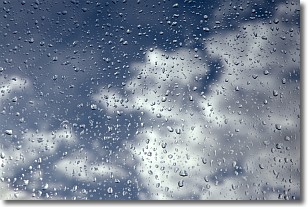Weather Alert in Michigan
Air Quality Alert issued July 31 at 12:25PM EDT by NWS Grand Rapids MI
AREAS AFFECTED: Mason; Lake; Osceola; Clare; Oceana; Newaygo; Mecosta; Isabella; Muskegon; Montcalm; Gratiot; Ottawa; Kent; Ionia; Clinton; Allegan; Barry; Eaton; Ingham; Van Buren; Kalamazoo; Calhoun; Jackson
DESCRIPTION: Air Quality Advisory through Saturday August 2nd... The Michigan Department of Environment, Great Lakes, and Energy (EGLE) has issued an Air Quality Advisory for elevated levels of fine particulate (PM2.5) across the state of Michigan. Pollutants across the state are expected to be in the Unhealthy for Sensitive Groups (USG, Orange AQI) range with some locations reaching the Unhealthy (Red AQI) range. The Air Quality Advisory includes all Michigan counties. Smoke from Canadian wildfires remains over the state Thursday, with PM2.5 concentrations ranging from USG to Unhealthy. Some locations, mostly in the Lower Peninsula, may experience improvements in air quality from late Thursday into Friday, however, that is expected to be short-lived as additional smoke plumes drop into the region. High pressure settling overhead will limit dispersion and keep smoke at the surface through the end of the week. This sustains the threat of increased PM2.5 and readings in the USG range will continue through Saturday, with some locations reaching the Unhealthy range. It is recommended that, when possible, you avoid strenuous outdoor activities, especially those with heart disease and respiratory diseases like asthma. Monitor for symptoms such as wheezing, coughing, chest tightness, dizziness, or burning in nose, throat, and eyes. Reduce or eliminate activities that contribute to air pollution, such as: outdoor burning, use of residential wood burning devices. Tips for households: Keep windows closed overnight to prevent smoke from getting indoors and, if possible, run central air conditioning with MERV-13 or higher rated filters. For up-to-date air quality data for Michigan visit the MiAir site: https://air-egle.hub.arcgis.com/ For up-to-date air quality data nationally visit EPAs Air Now site: https://www.airnow.gov/ For further health information, please see MDHHS Wildfire Smoke and Your Health site: https://www.michigan.gov/mdhhs/safety-injury-prev/environmental-health/ your-health-and-wildfire-smoke
INSTRUCTION: N/A
Want more detail? Get the Complete 7 Day and Night Detailed Forecast!
Current U.S. National Radar--Current
The Current National Weather Radar is shown below with a UTC Time (subtract 5 hours from UTC to get Eastern Time).

National Weather Forecast--Current
The Current National Weather Forecast and National Weather Map are shown below.

National Weather Forecast for Tomorrow
Tomorrow National Weather Forecast and Tomorrow National Weather Map are show below.

North America Water Vapor (Moisture)
This map shows recent moisture content over North America. Bright and colored areas show high moisture (ie, clouds); brown indicates very little moisture present; black indicates no moisture.

Weather Topic: What are Cumulonimbus Clouds?
Home - Education - Cloud Types - Cumulonimbus Clouds
 Next Topic: Cumulus Clouds
Next Topic: Cumulus Clouds
The final form taken by a growing cumulus cloud is the
cumulonimbus cloud, which is very tall and dense.
The tower of a cumulonimbus cloud can soar 23 km into the atmosphere, although
most commonly they stop growing at an altitude of 6 km.
Even small cumulonimbus clouds appear very large in comparison to other cloud types.
They can signal the approach of stormy weather, such as thunderstorms or blizzards.
Next Topic: Cumulus Clouds
Weather Topic: What is Drizzle?
Home - Education - Precipitation - Drizzle
 Next Topic: Evaporation
Next Topic: Evaporation
Drizzle is precipitation in the form of water droplets which are
smaller than raindrops.
Drizzle is characterized by fine, gently falling droplets and typically does not
impact human habitation in a negative way. The exception to this is freezing drizzle,
a condition where drizzle freezes immediately upon reaching earth's surface.
Freezing drizzle is still less dangerous than freezing rain, but can
potentially result in hazardous road conditions.
Next Topic: Evaporation
Current conditions powered by WeatherAPI.com




